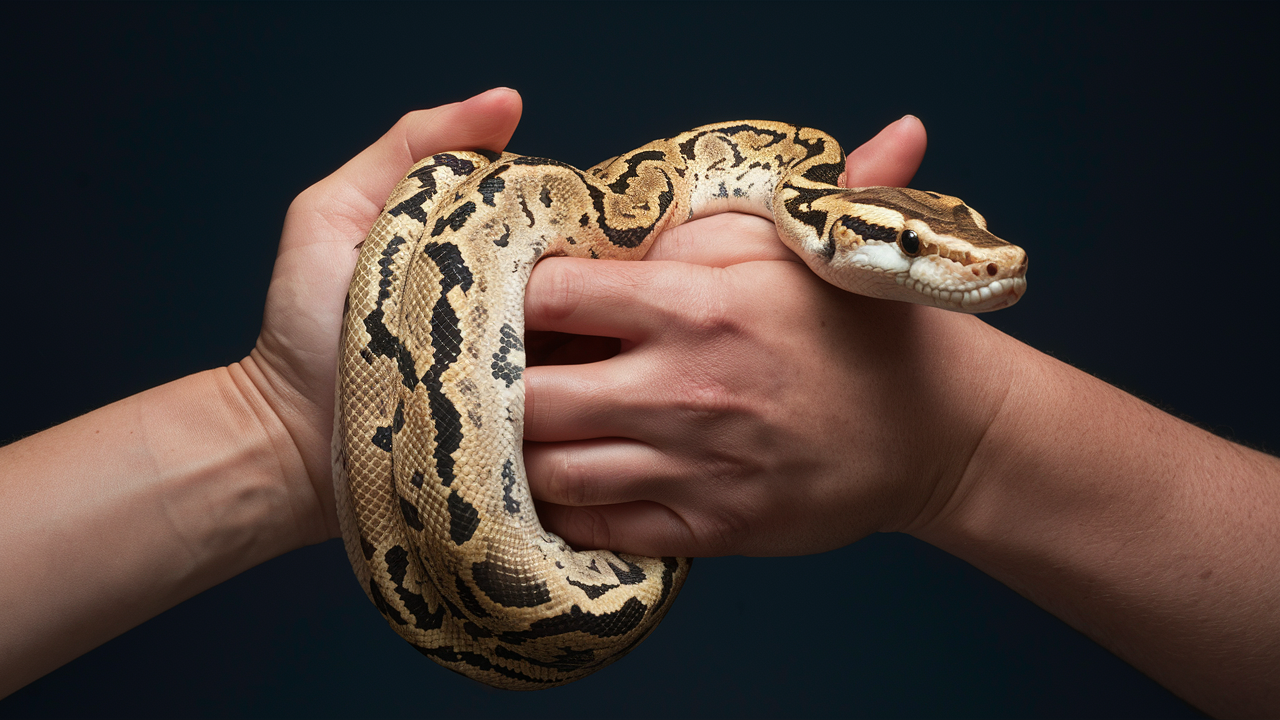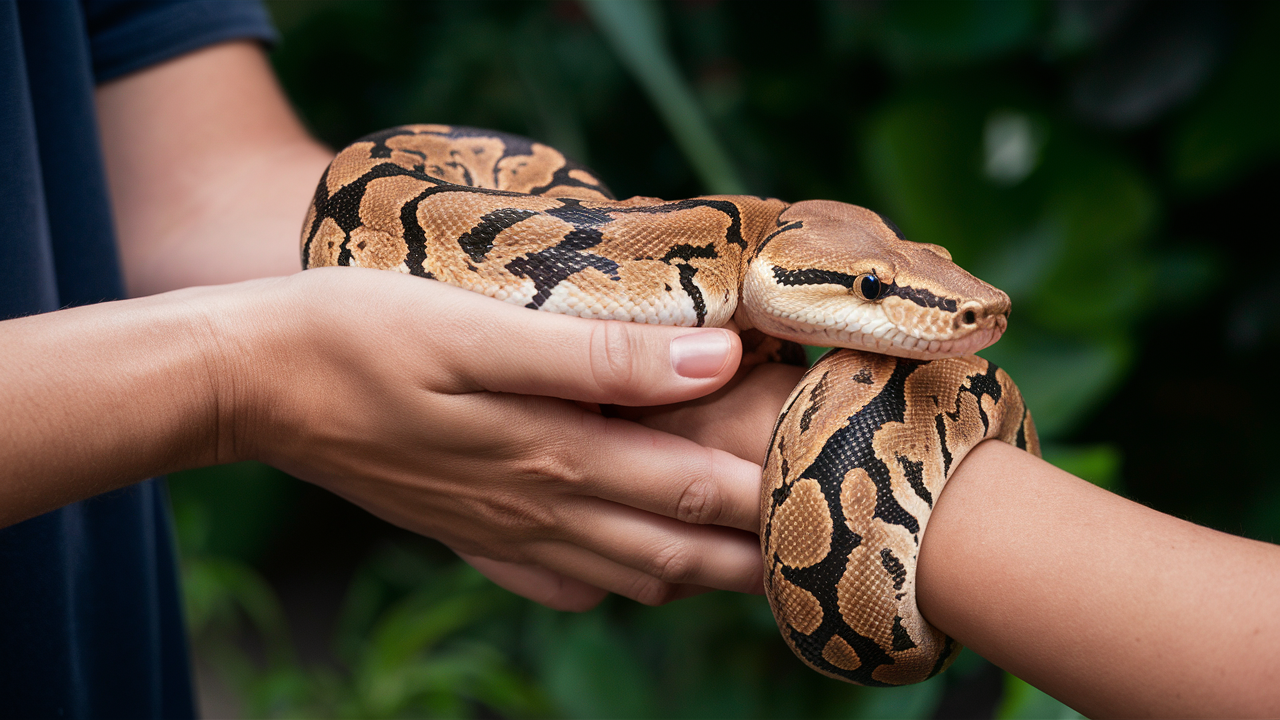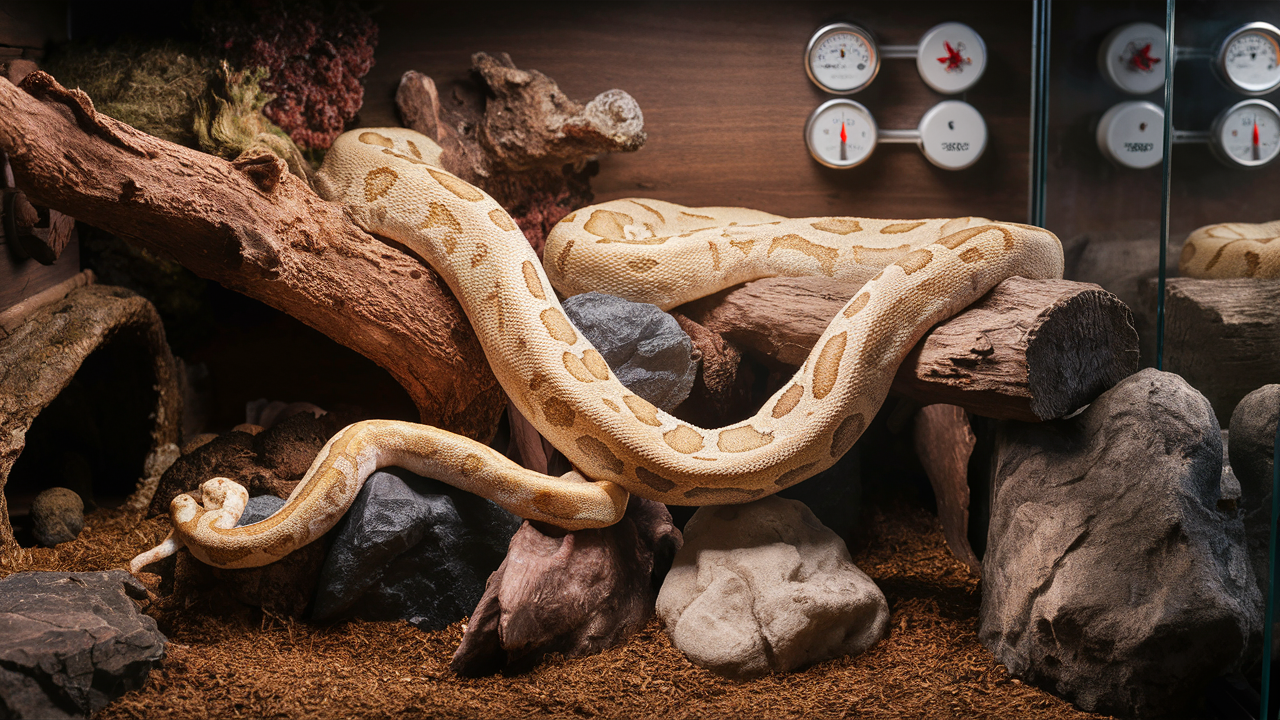Ball pythons, also known as royal pythons, are among the most popular pet snakes, thanks to their docile nature and manageable size. If you’re considering bringing one into your home, it’s essential to understand how to care for ball pythons properly. This guide will provide you with everything you need to know, from habitat setup and feeding requirements to health care and handling tips. With the right knowledge and preparation, you can ensure a happy and healthy life for your new companion.
Understanding Ball Pythons
What is a Ball Python?
The ball python (Python regius) is a non-venomous constrictor native to sub-Saharan Africa. They typically grow to about 3-5 feet in length, making them suitable for both novice and experienced snake owners. Their unique name comes from their tendency to curl into a ball when threatened, providing a safe hiding spot.
Why Choose a Ball Python?
- Temperament: Ball pythons are known for their gentle disposition, making them great pets for families and first-time reptile owners.
- Variety: They come in various morphs, displaying stunning colors and patterns, appealing to both aesthetic preferences and collectors.
- Size: Their moderate size makes them easier to handle and house compared to larger snake species.
Personal Anecdote
When I first adopted my ball python, Luna, I was surprised by how quickly she adapted to her new home. It was an incredible moment to see her explore her habitat for the first time. Luna’s calm demeanor made her an instant favorite among family and friends, and I often found myself sharing her unique personality traits.
Setting Up the Habitat
Creating a suitable environment is crucial for the well-being of your ball python. Here’s how to set up their habitat effectively.
1. Enclosure Size
A ball python requires a secure enclosure, preferably a glass terrarium or a plastic tub.
- Size Recommendations:
- Hatchlings: 20-gallon tank
- Juveniles: 30-gallon tank
- Adults: 40-gallon tank or larger
2. Substrate
Choosing the right substrate is vital for maintaining humidity and cleanliness.
- Options:
- Aspen shavings: Provides a natural look and allows for burrowing.
- Coconut fiber: Retains moisture well and is safe for your snake.
- Paper towels: Easy to clean but lacks aesthetic appeal.
3. Temperature and Lighting
Maintaining the right temperature gradient is crucial for the snake’s digestion and activity levels.
- Basking Spot: 88-95°F (31-35°C)
- Cool Side: 75-80°F (24-27°C)
- Night Temperature: Should not drop below 70°F (21°C)
Heating Options:
- Under-tank heat pads: Provides warmth from below.
- Ceramic heat emitters: Good for providing ambient heat without light.
Lighting: Although ball pythons don’t require UVB lighting, a day/night cycle should be maintained with a light source that mimics natural daylight.
4. Humidity Levels
Ball pythons thrive in environments with 40-60% humidity. A hygrometer can help monitor humidity levels effectively.
- Ways to Maintain Humidity:
- Regular misting of the enclosure.
- Adding a water dish large enough for soaking.
5. Hiding Spots
Providing adequate hiding places is essential for your ball python’s psychological well-being.
- Materials:
- Commercial reptile hides
- Natural items like logs or rocks (ensure they are cleaned and safe)
Feeding Your Ball Python

Understanding how to care for ball pythons also includes knowing how to feed them properly.
1. Diet
Ball pythons are carnivorous and primarily eat rodents in captivity.
- Feeding Schedule:
- Hatchlings: Every 5-7 days
- Juveniles: Every 7-10 days
- Adults: Every 10-14 days
2. Prey Size
Ensure that the prey size is appropriate for your snake’s size. The general rule is that the prey should be about the same diameter as the widest part of the snake.
3. Methods of Feeding
- Live Feeding: Can stimulate natural hunting instincts but poses risks of injury to the snake.
- Frozen/Thawed Prey: Safer and recommended for most owners. Ensure the prey is completely thawed and warm before offering.
Expert Quote
According to Dr. Michael K., a herpetologist, “Feeding ball pythons frozen-thawed prey is not only safer but also encourages more natural feeding behaviors, which is crucial for their mental health.”
Health Care and Common Issues
Maintaining your ball python’s health is crucial for a long, happy life.
1. Regular Checkups
A veterinarian specializing in reptiles should examine your snake at least once a year to catch potential health issues early.
2. Common Health Problems
- Respiratory Infections: Symptoms include wheezing or bubbling at the mouth. Maintaining proper temperature and humidity can prevent this.
- Mites: Small parasites that can cause discomfort. Regularly inspect your snake and enclosure for signs of mites.
- Shedding Issues: Incomplete shedding can indicate humidity problems. Ensure proper humidity and provide a rough surface for shedding.
Case Study
A recent case study from the Reptile Health Association highlighted that over 50% of new ball python owners experienced shedding issues due to inadequate humidity. Simple adjustments, such as using a hygrometer and providing proper soaking areas, significantly improved shedding success rates.
Handling Your Ball Python

Proper handling is key to building trust with your snake.
1. Getting Started
- Always handle your ball python gently, supporting its body fully.
- Avoid handling right after feeding (wait 24-48 hours) to prevent regurgitation.
2. Signs of Stress
Learn to recognize when your ball python is stressed:
- Hissing or striking behavior
- Excessive hiding
- Refusal to eat
3. Handling Tips
- Start with short handling sessions, gradually increasing duration as your snake becomes more comfortable.
- Always wash your hands before and after handling to prevent the transfer of bacteria.
Conclusion
Caring for a ball python can be a rewarding experience, provided you understand their specific needs. By setting up the right habitat, feeding them properly, and monitoring their health, you can ensure your ball python thrives in your care.
Ready to welcome a ball python into your home? Be sure to research reputable breeders and consider visiting your local pet store for supplies. Share your ball python care experiences and questions in the comments below!
